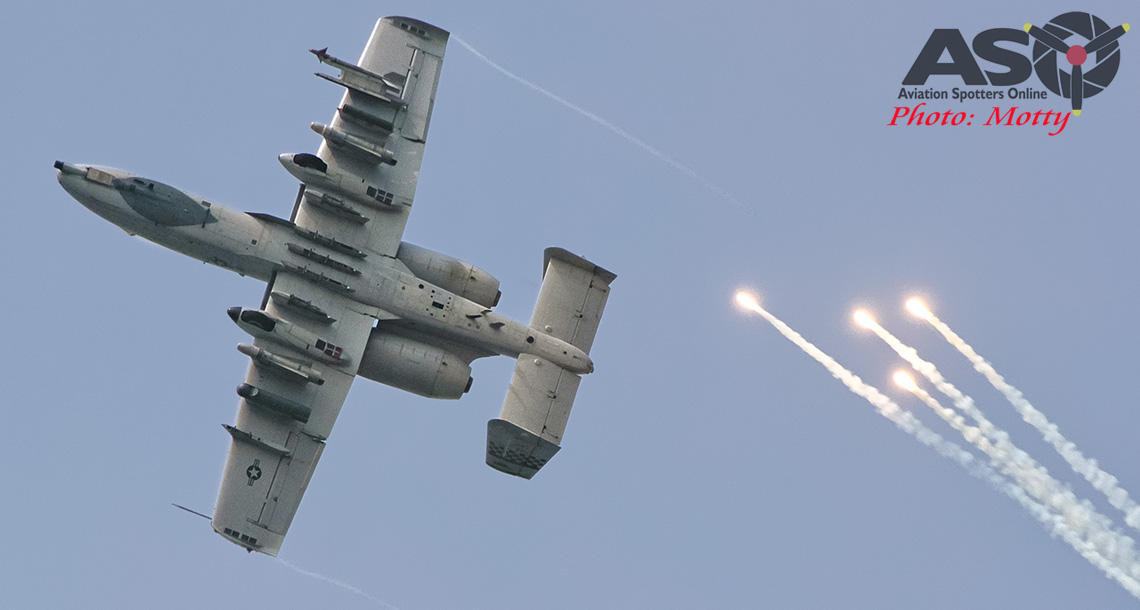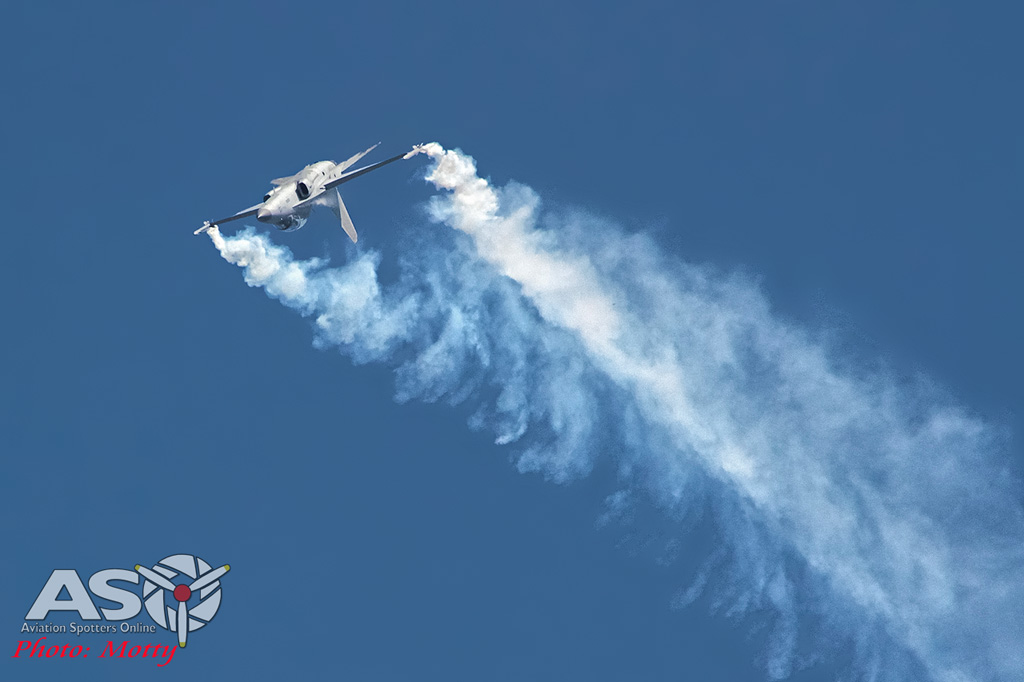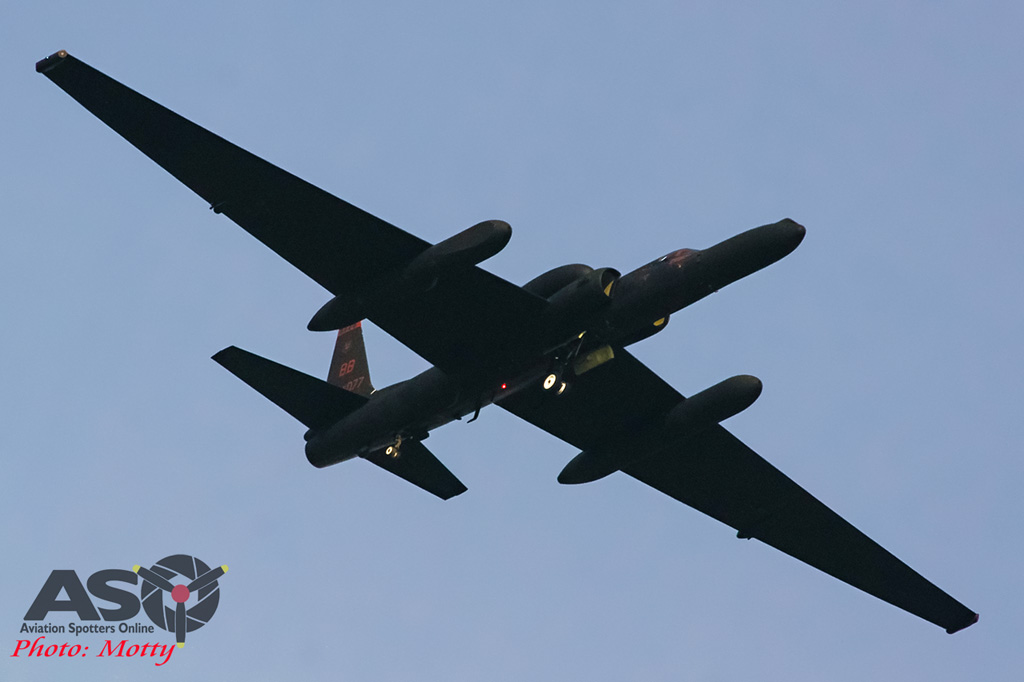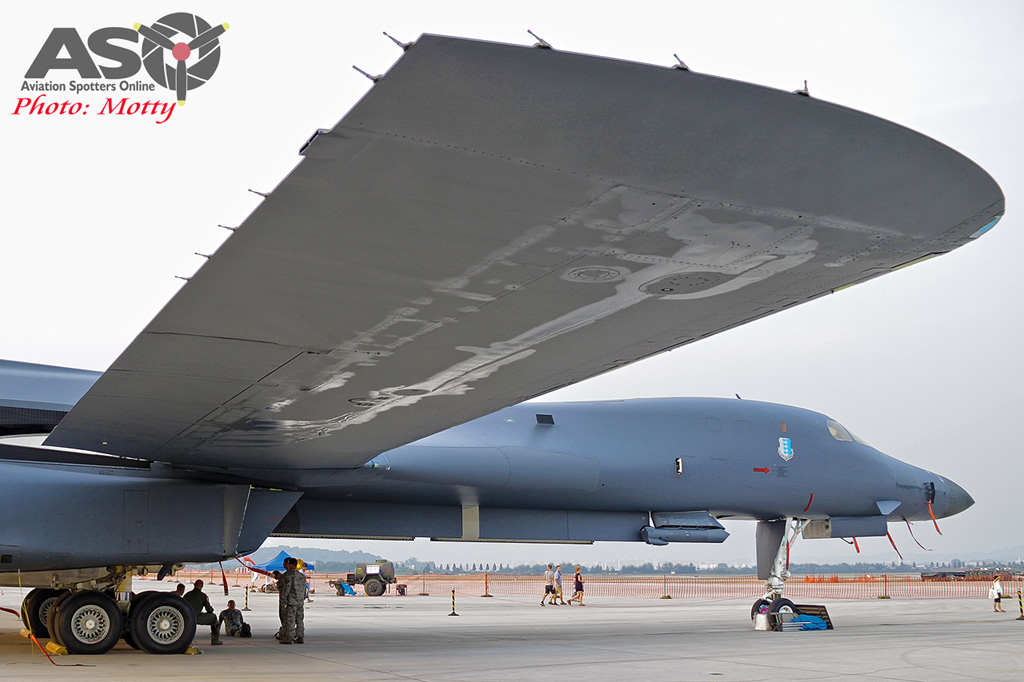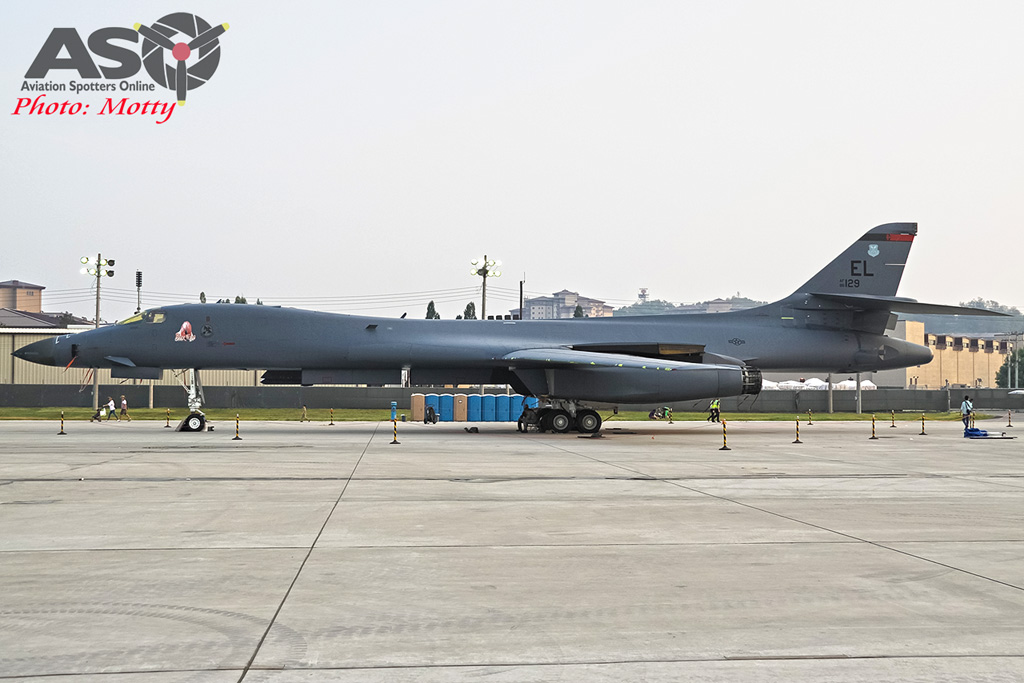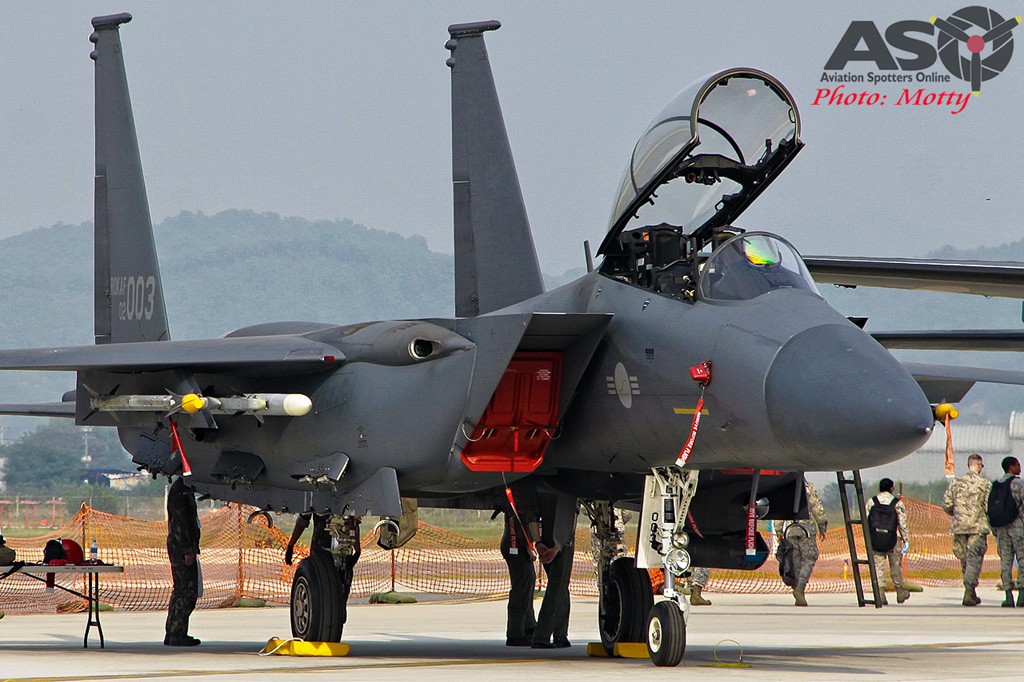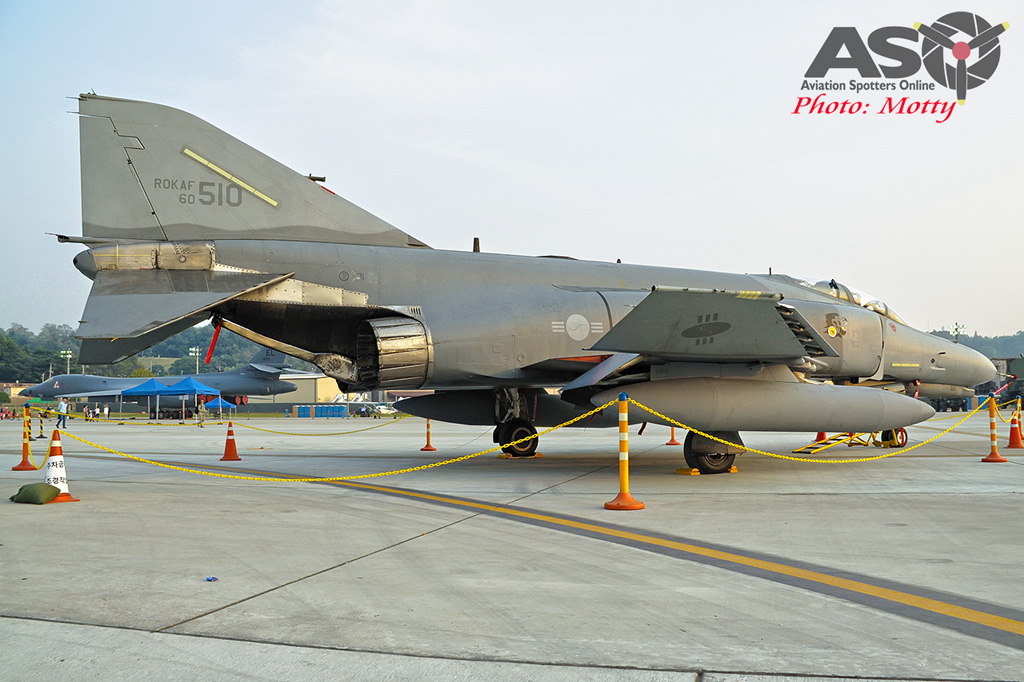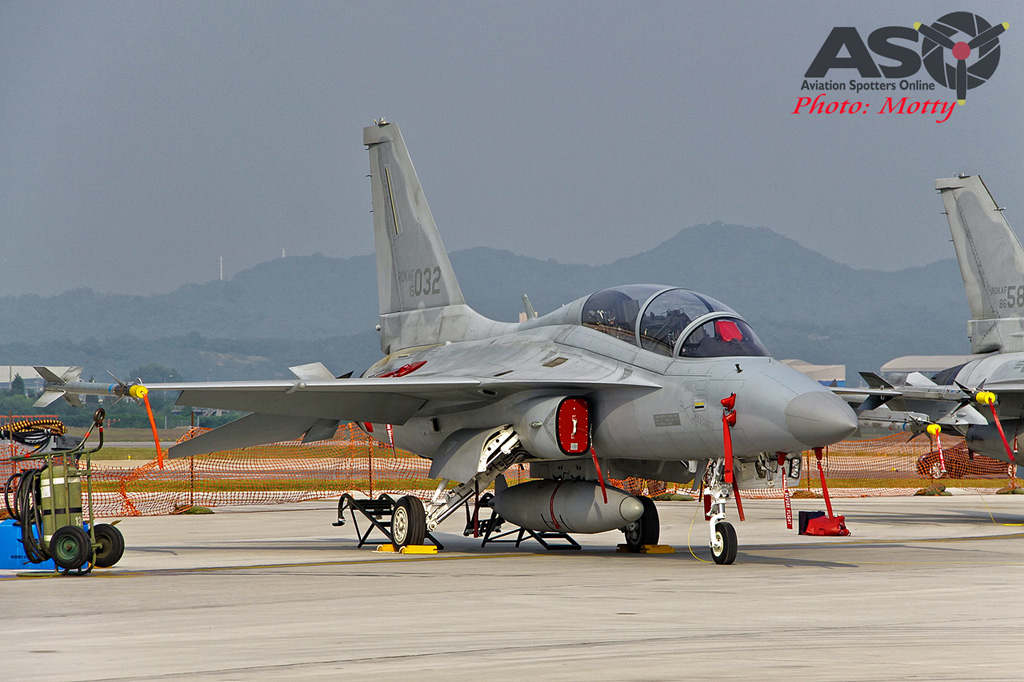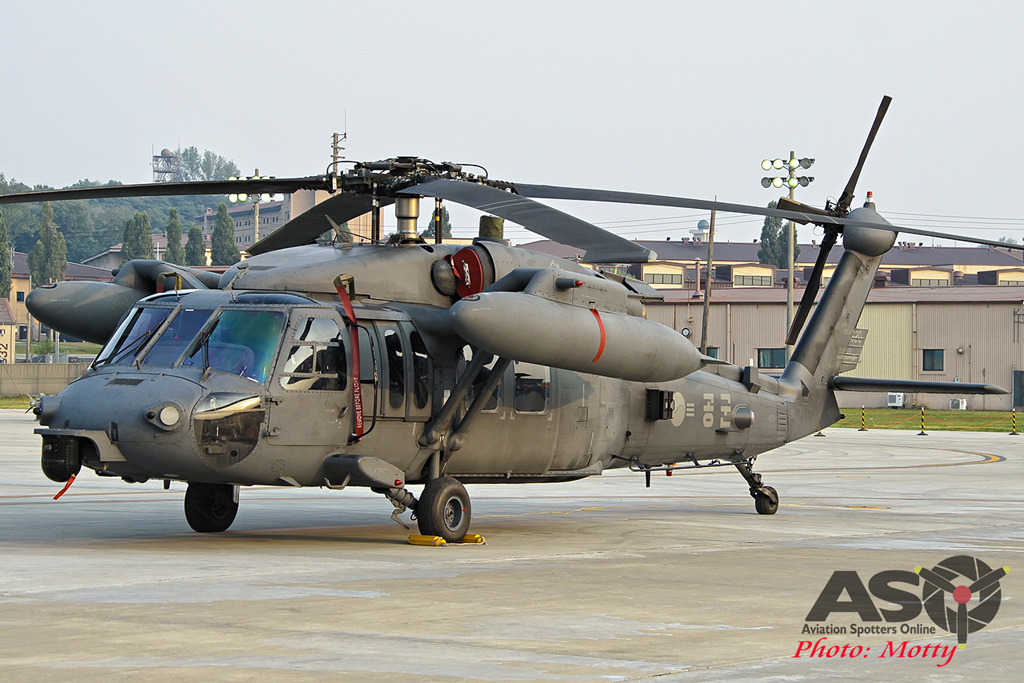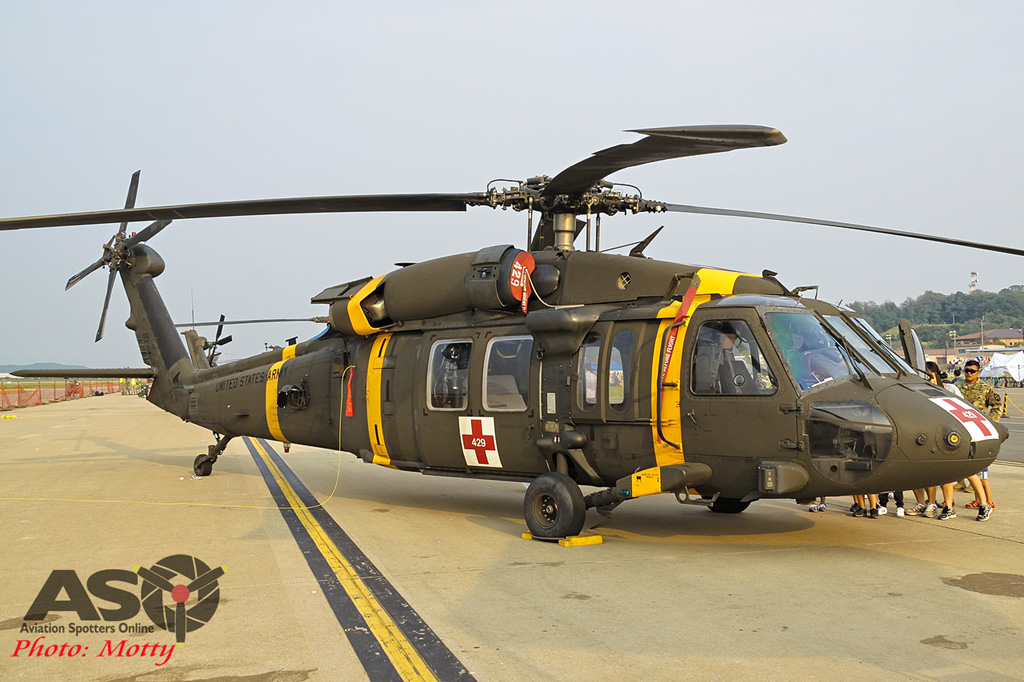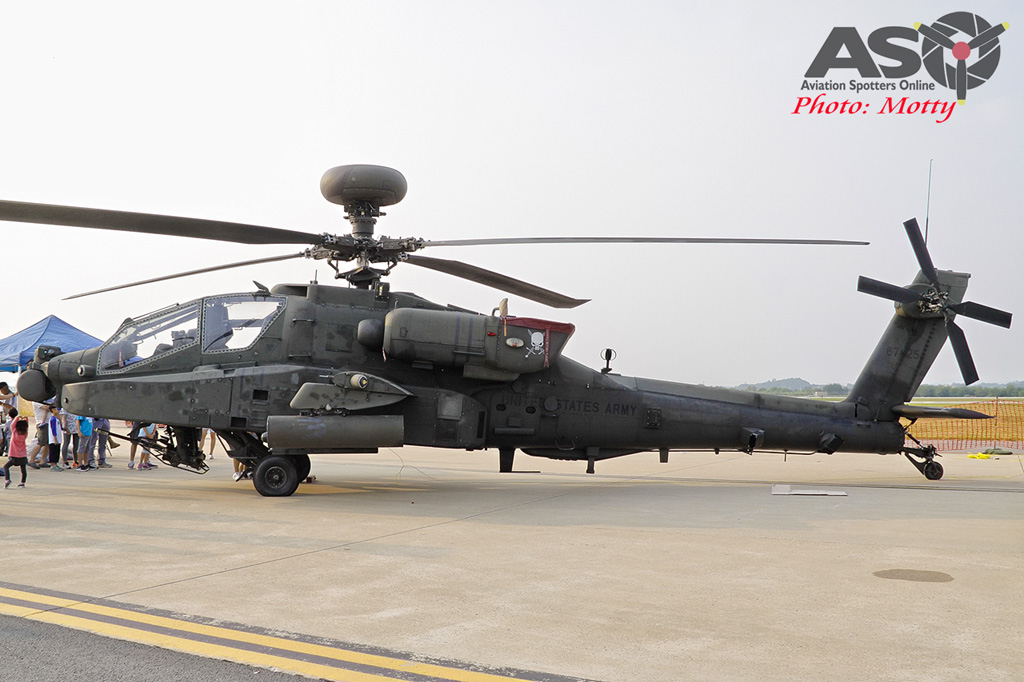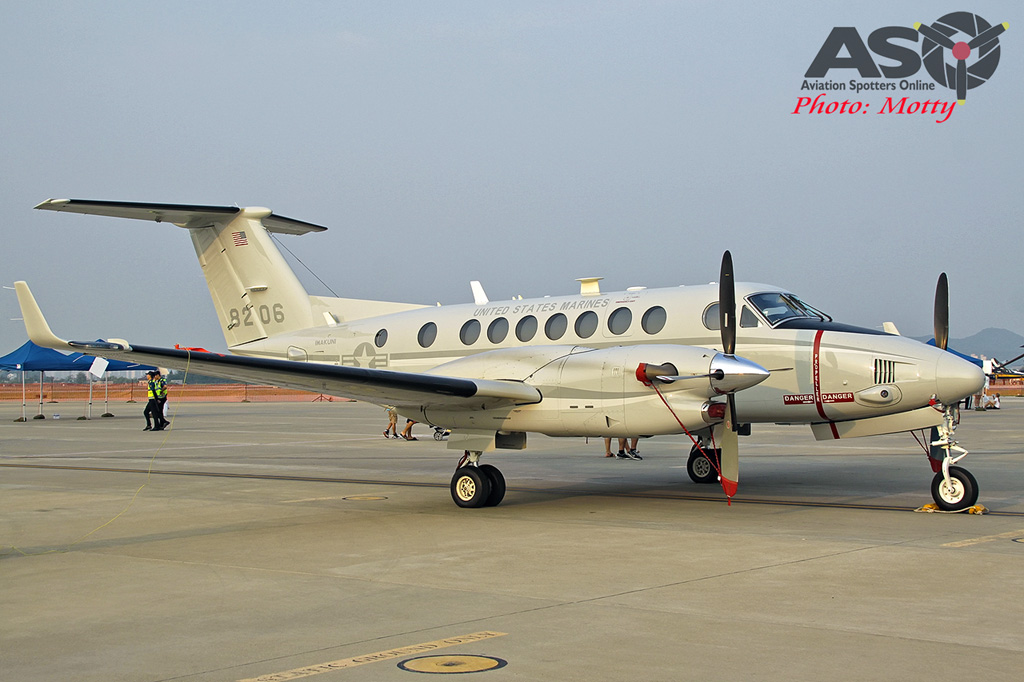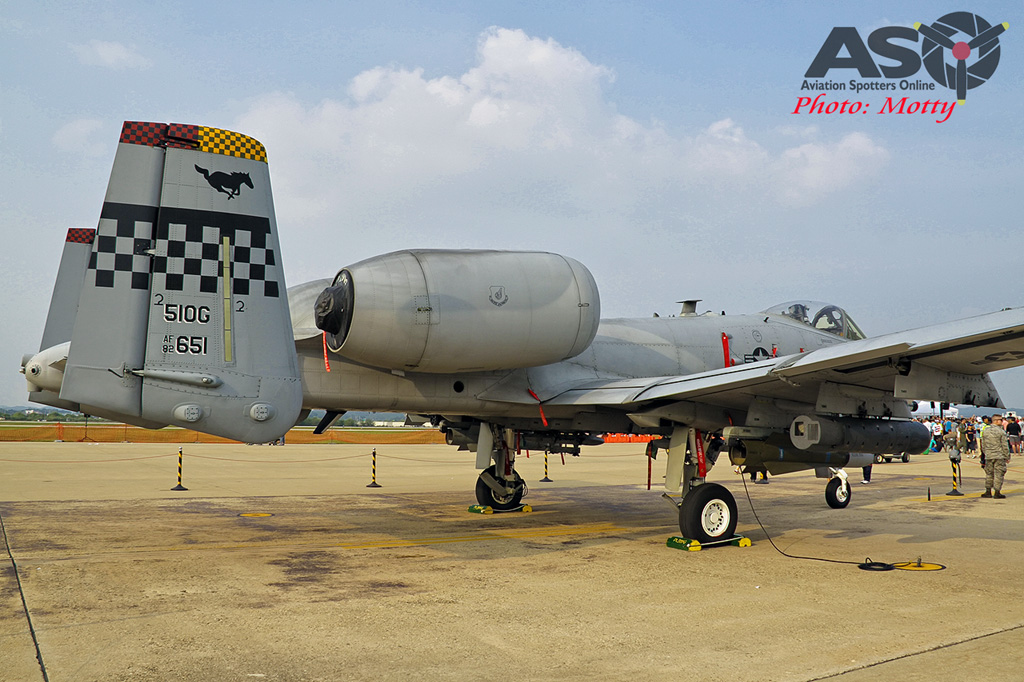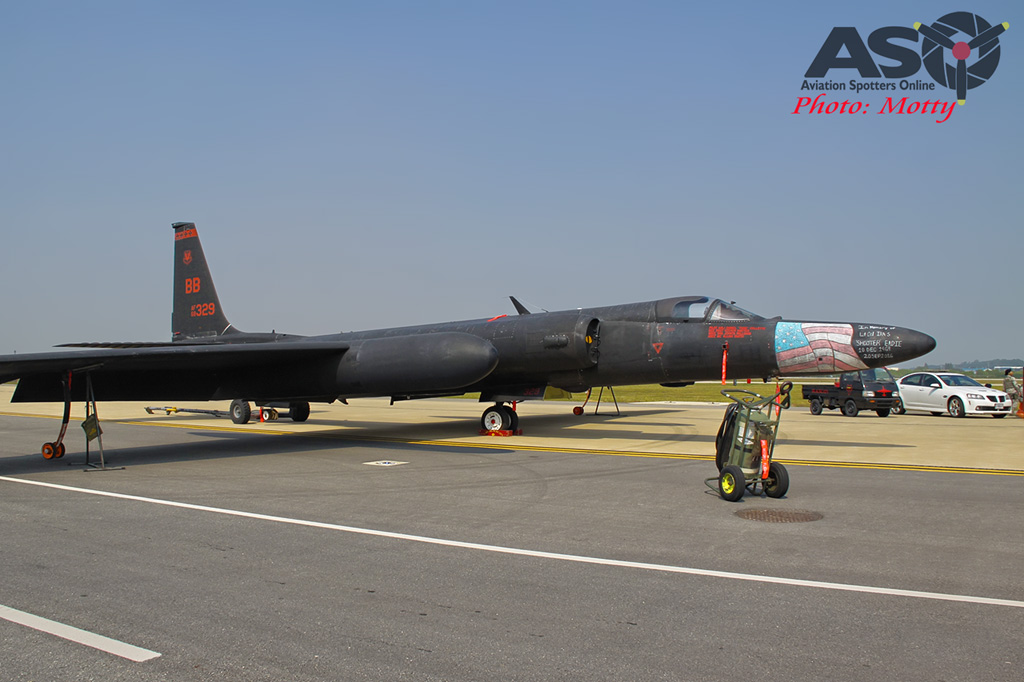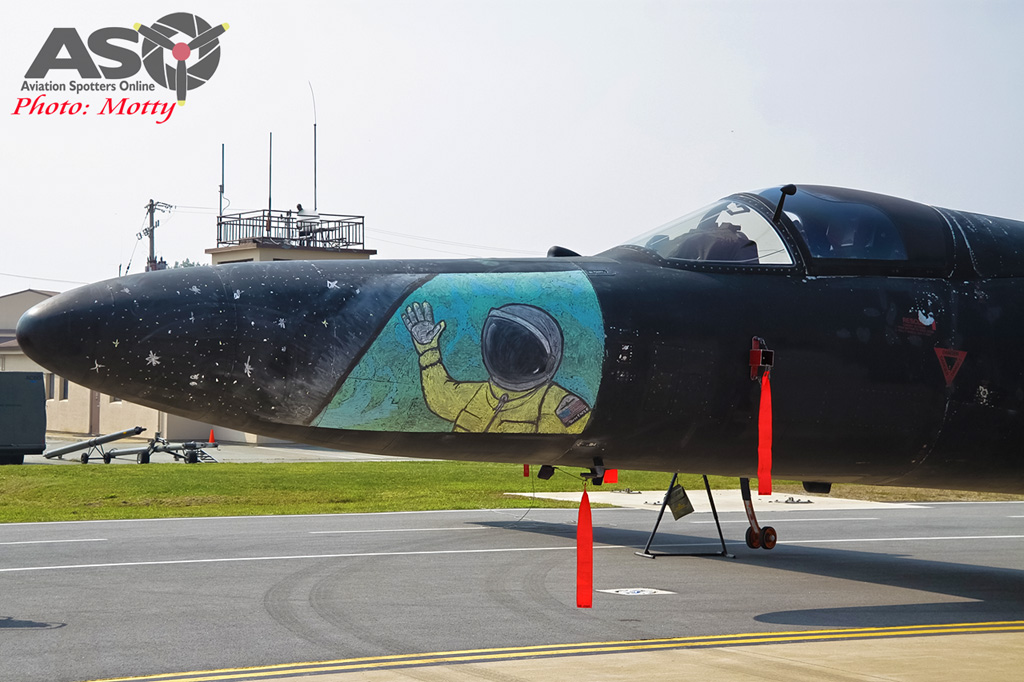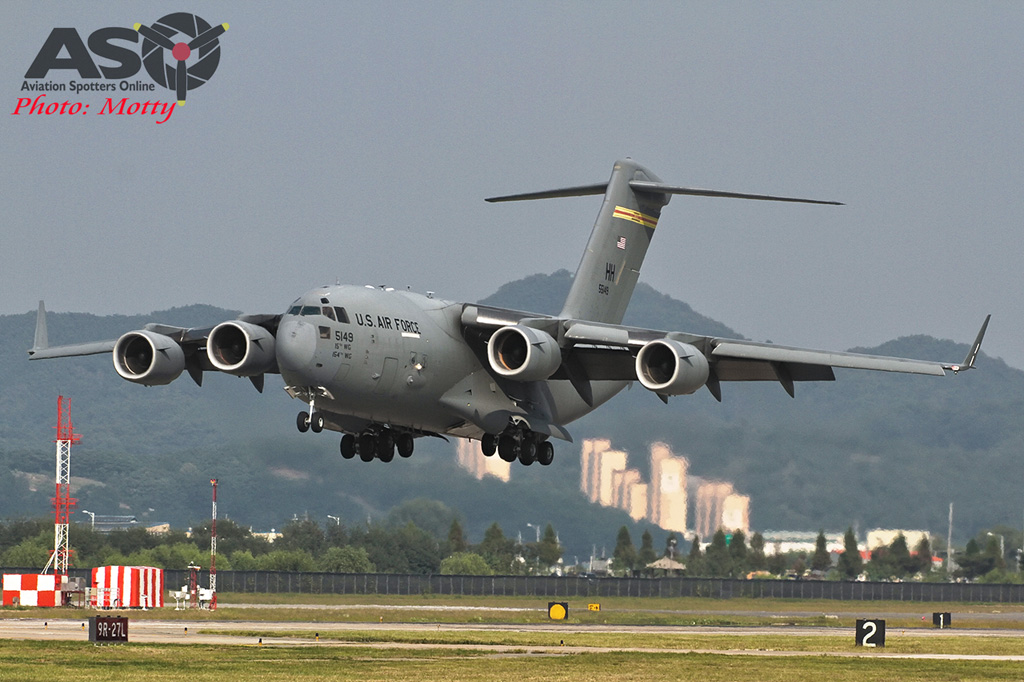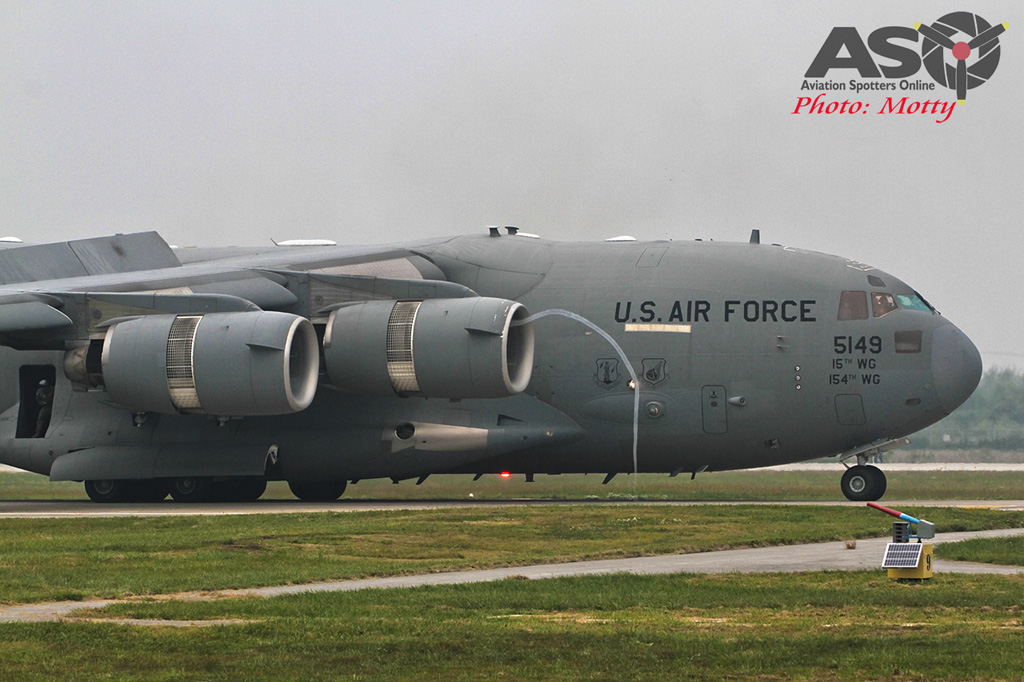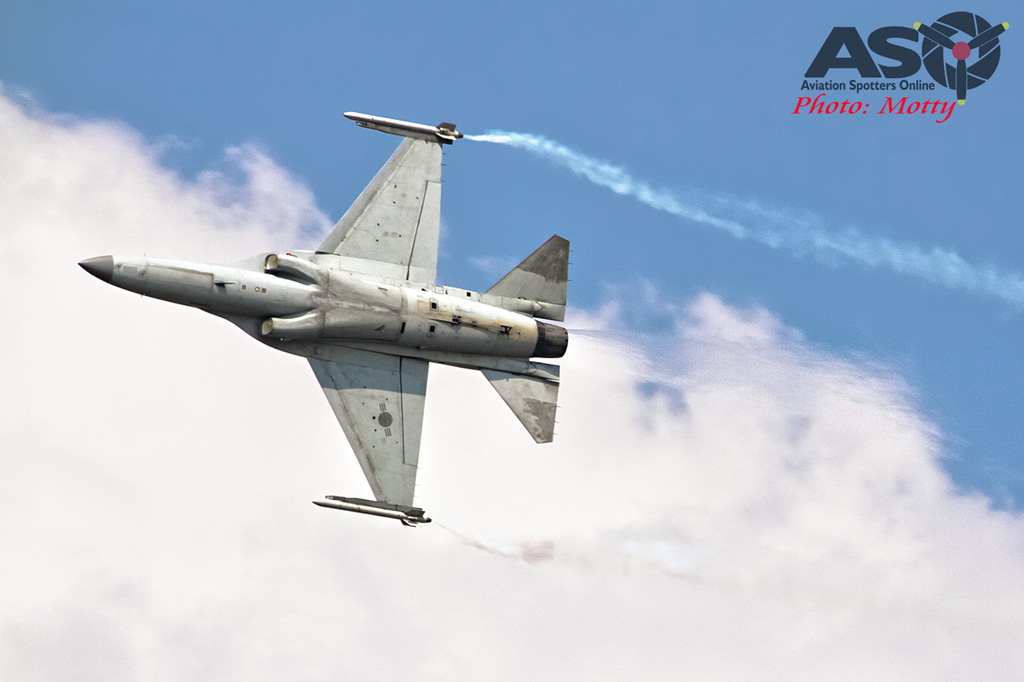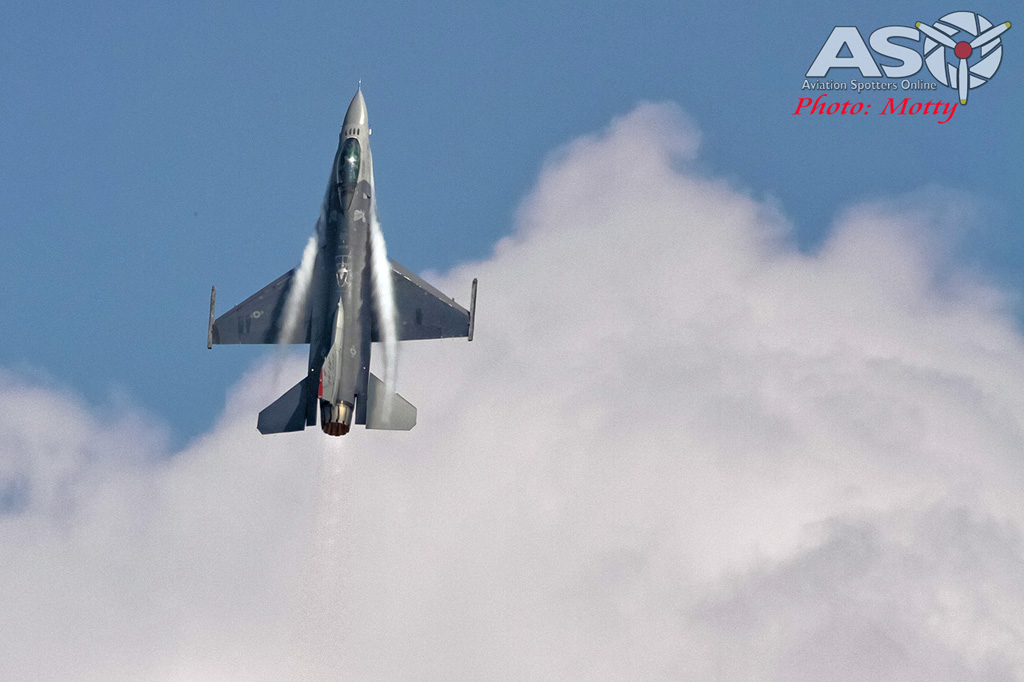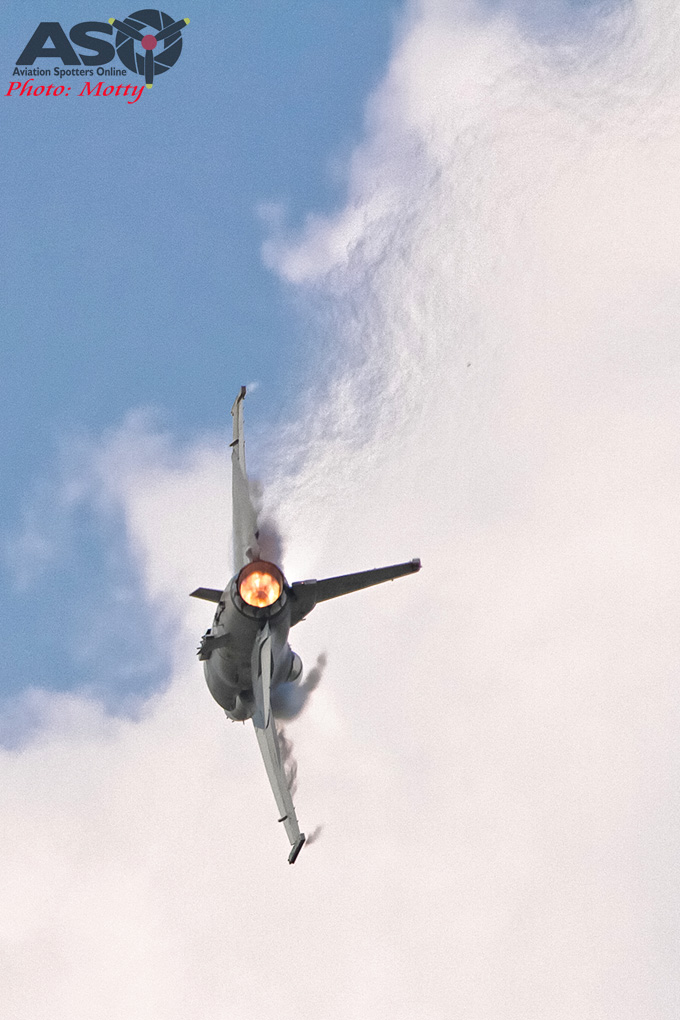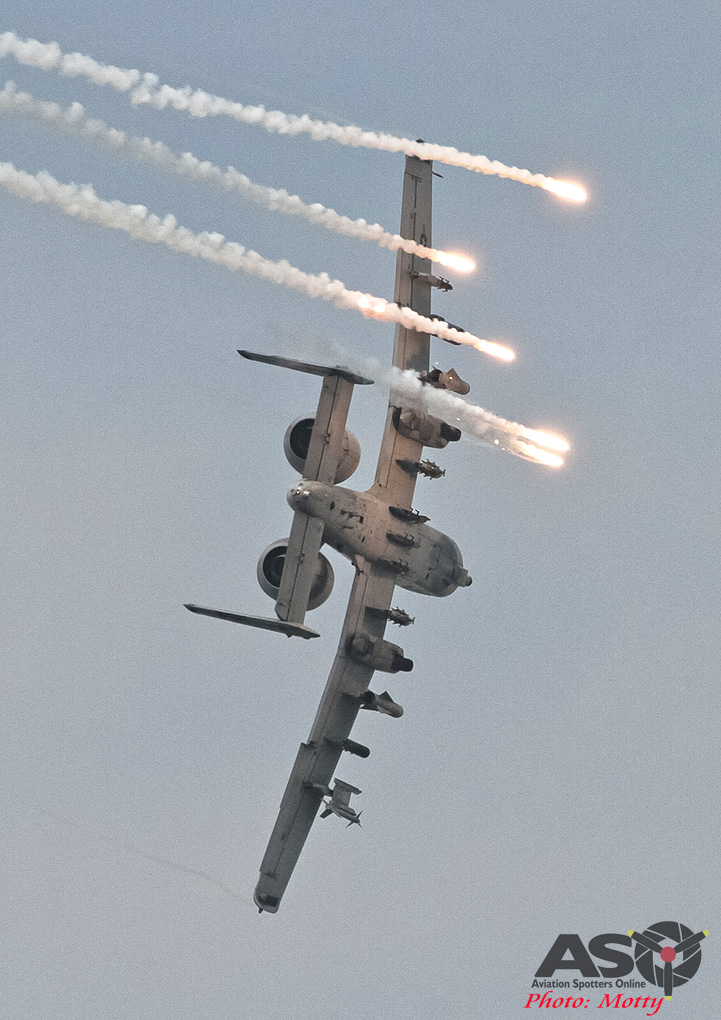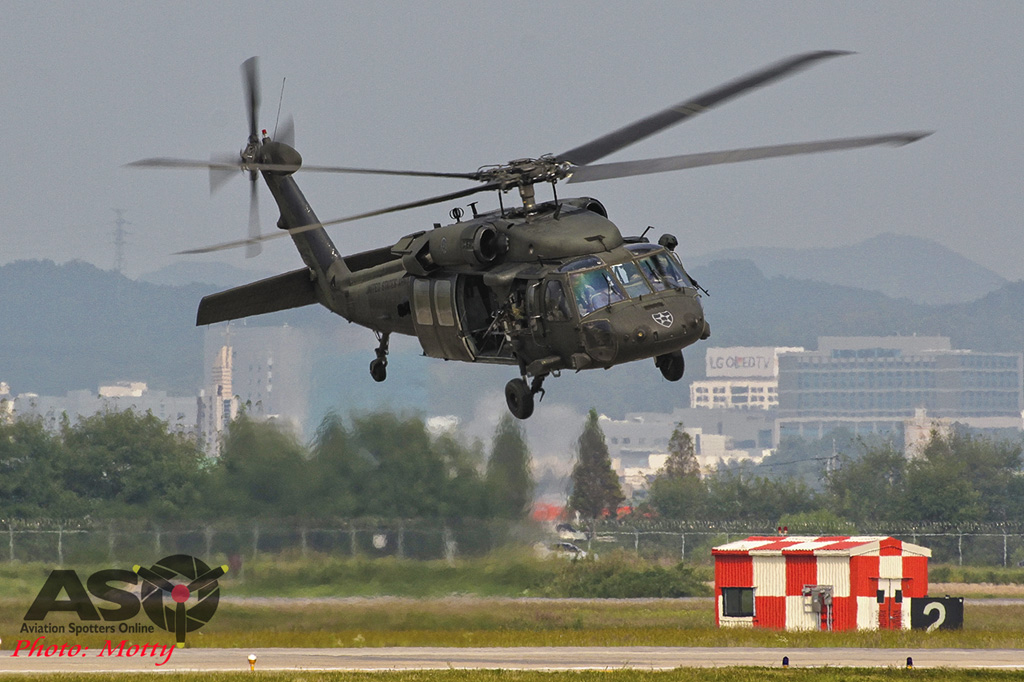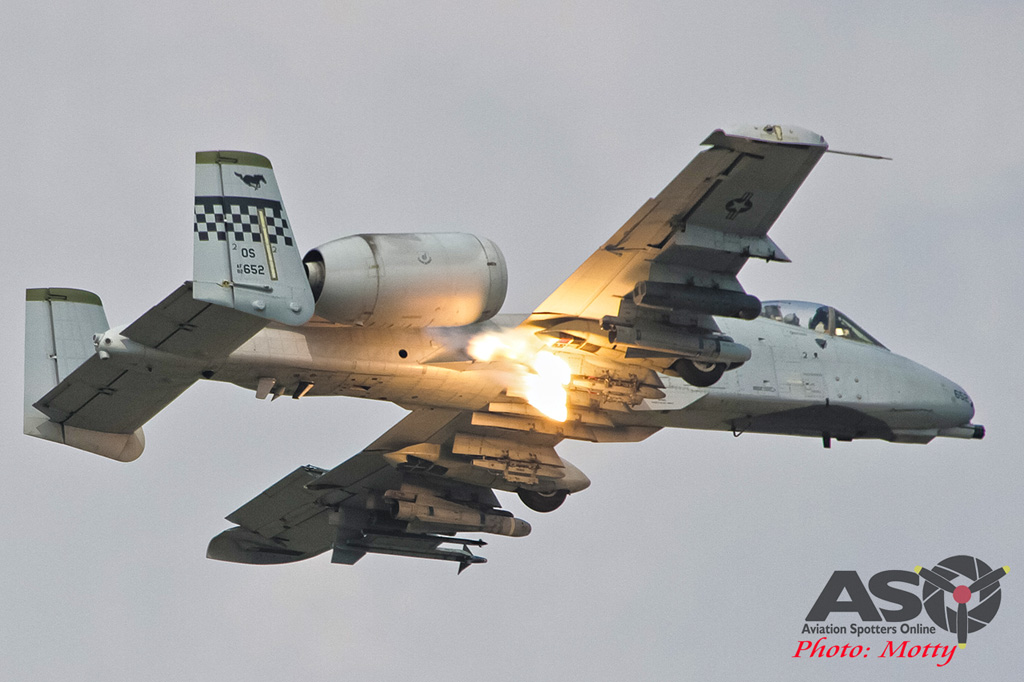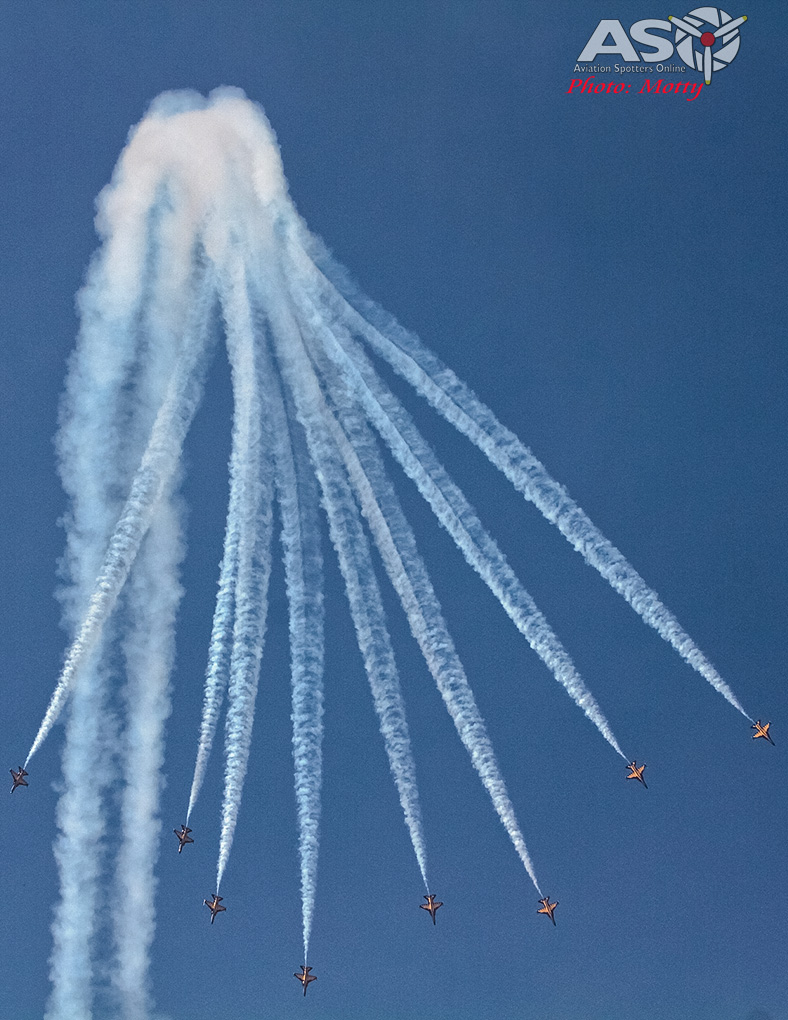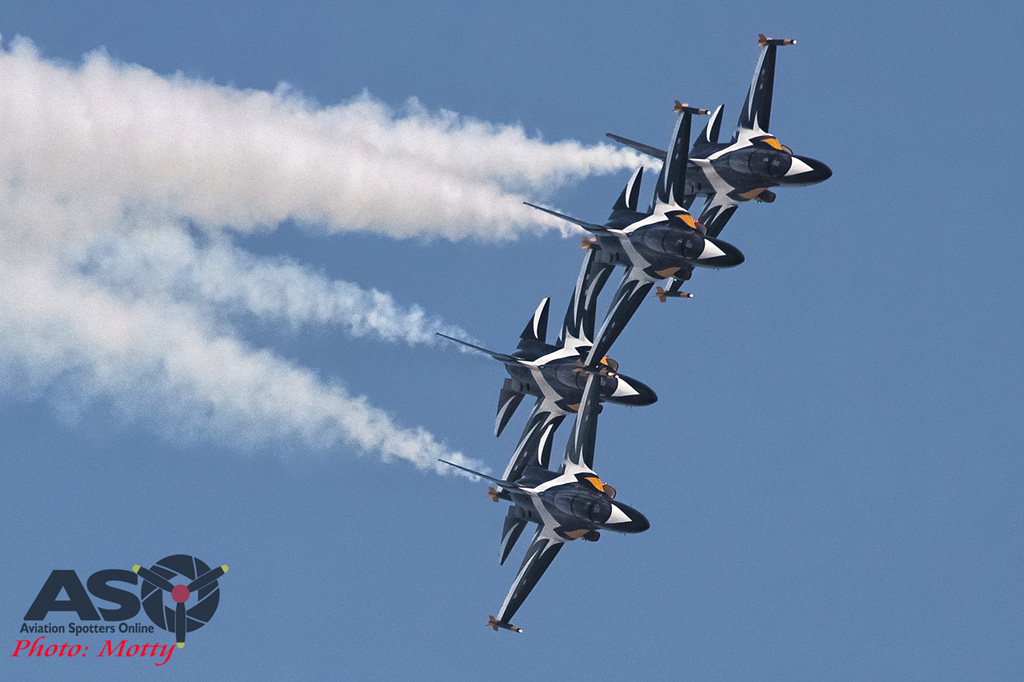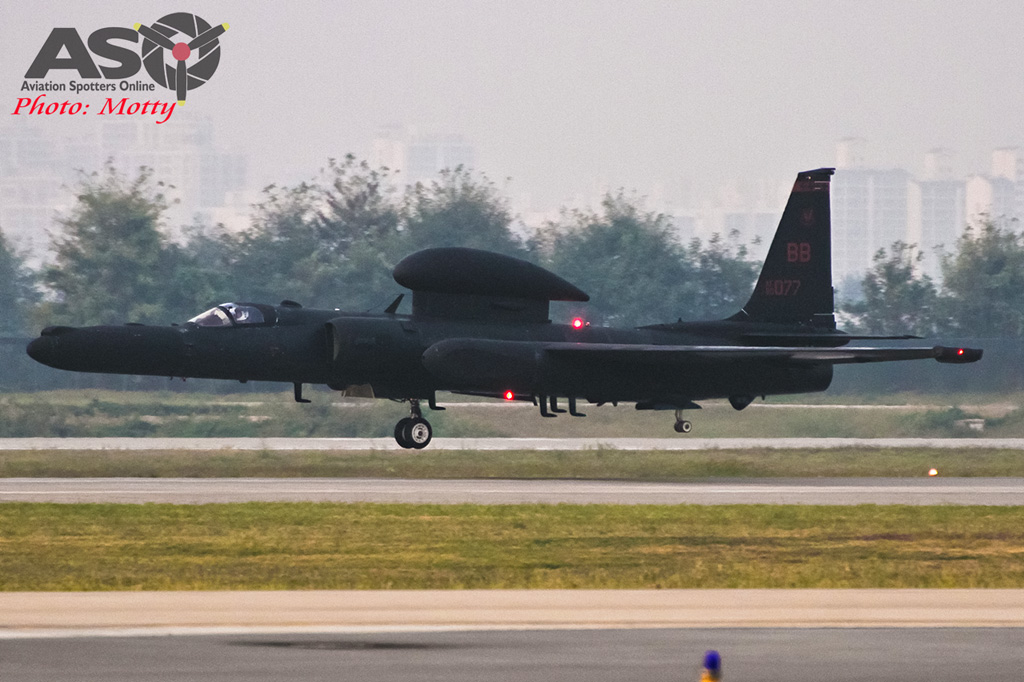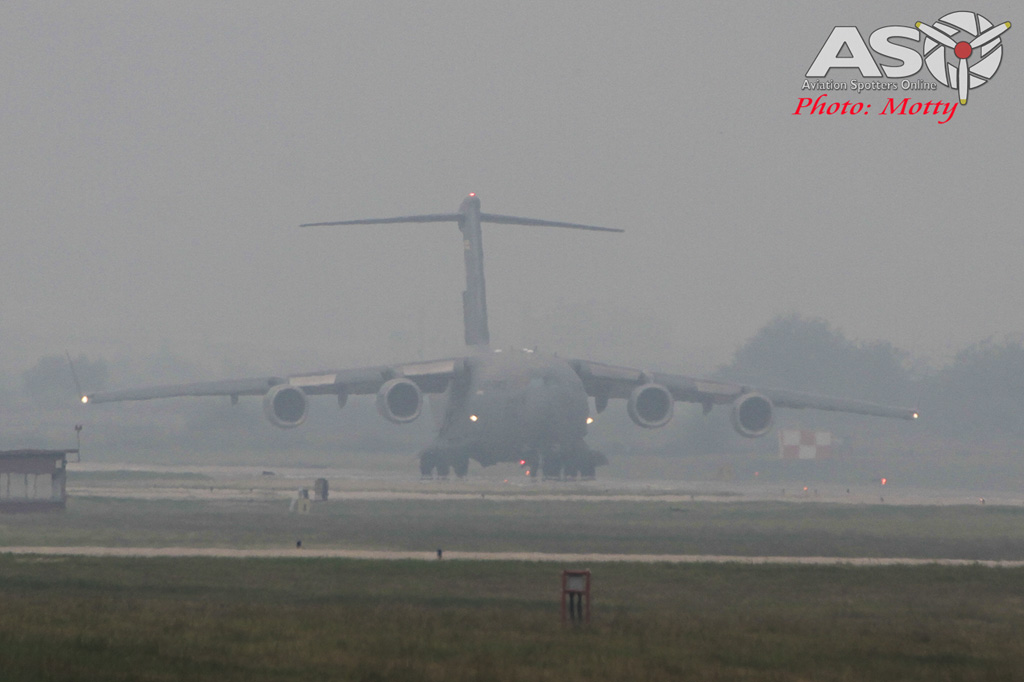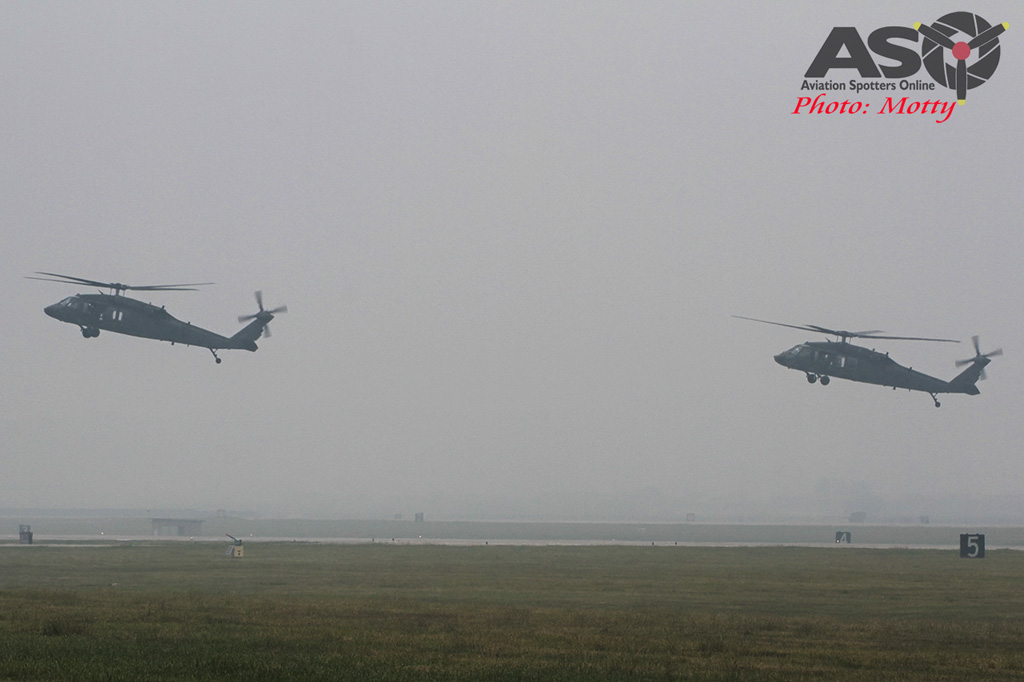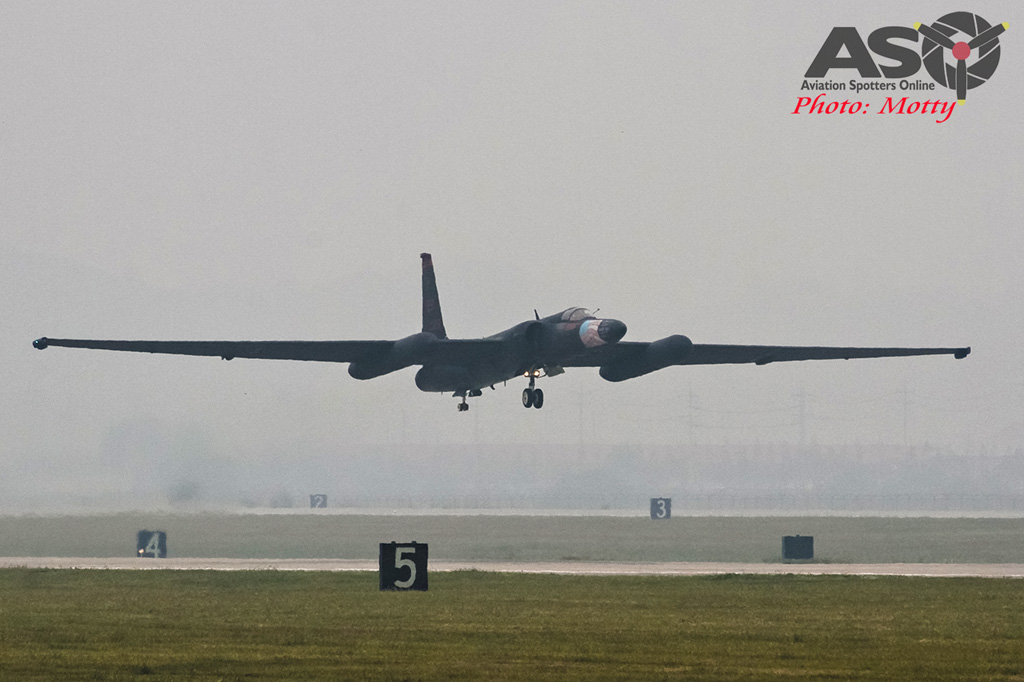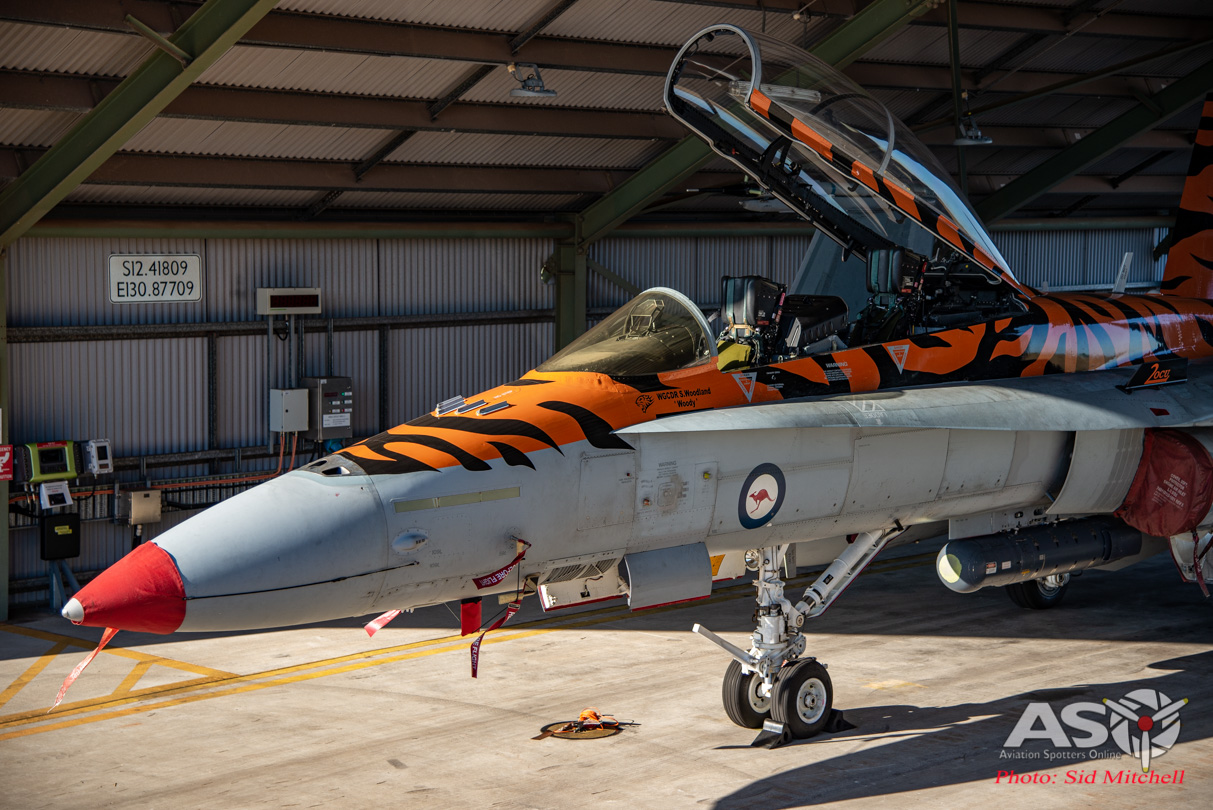A-10s overhead popping flares while a pair of US Army Blackhawks rescue a downed pilot, the chance to see a normally reclusive U-2 in the air, the skillful formation and solo displays by the Republic Of Korea Air Force’s (ROKAF’s) Black Eagles in their indigenous T-50s, examples of the ROKAF’s frontline hardware in the static and, for good measure, a B-1B Lancer on show as well! There’s only one place that enthusiasts are going to see a display like this and that’s at the Air Power Day display held at the home of the USAF’s 51st Fighter Wing (FW) at Osan in South Korea.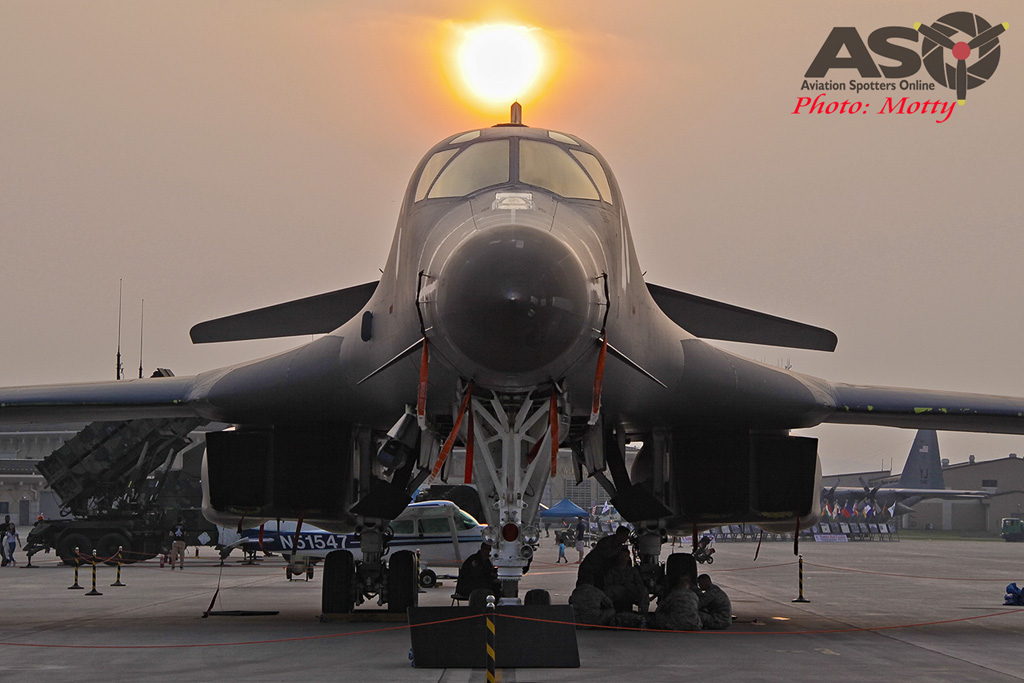
A popular annual event on the Korean air show calendar in the past, it has been four long years since Osan last hosted an Air Power Day show due to cost-saving considerations within the US Department of Defense during that time. Thankfully though, the 51st FW was once again able to bring their display back for the Korean public over the weekend of the 24th & 25th of September 2016.
The 51st FW held a media day on the Friday before the show where some of the flying displays conducted their final practices and the wing’s commanding officer, Col Hansen, fielded questions about the coming weekend from local media. Conscious of being guests in South Korea and the disruptions that any large military installation can cause for any community, no matter the location, the Air Power show is a way of allowing the public to come and see what it is that the US and Korean forces do in defence of their country as well as to say thank you to the community for their support and understanding over the years. While enthusiasts may focus on the obvious hardware on show in the air and on the ground, there were equally important displays on the ground from the different support units with vehicles, weapons handling displays and so-on as well as musical performances and cultural displays throughout both days and various food stalls offering the best of both Korean and American delicacies for the huge crowds to enjoy.

51st FW Commanding Officer, Col Hansen, in front of the 7th AF Commanders aircraft, from the 51st FW, during the media day before the show.
The gates opened at 9am each day and there was already a long queue waiting to get in each time yet, even on the weekend and while the base was geared up for an airshow, a U-2 headed out on an operational sortie while we waited in line. After clearing the security checks, the first goal for us photographers was to get to the B-1 and the other static displays quickly to get those elusive, crowd-free shots. For the plane buffs, the highlight of the show was the chance to see an example of the mighty Rockwell B-1B Lancer on static display for the weekend. Only the second time that one of these impressive machines has been on public display in Korea (the first being at Seoul in 2005), it was the first chance for many (myself included) to get an up-close look at a Bone, as they are sometimes called.
B-1s had been featuring in international news coverage in the days and weeks before the show as examples from the 34th Expeditionary Bomb Squadron, deployed to Anderson Air Force Base at Guam in the Pacific from their home base at Ellsworth in South Dakota USA, had made flights to the Korean peninsula in a show of force during increased tensions with North Korea. While there had been no mention of a B-1 being a part of the planned activities for the weekend in the media releases before the show, I had seen on our local news just a few days before I was due to depart for Korea that, during one of these flights, one machine had actually landed at Osan. While I regret the political tensions which made their presence necessary, I seriously hoped that it might still be there by the time I arrived, and I was in luck, it was!
Other attractions in the static lineup included a CN-235, F-15K, F-4E, KF-16C, FA-50, KF-5E, T-50, KT-1, CH-47D and HH-60P from the ROKAF;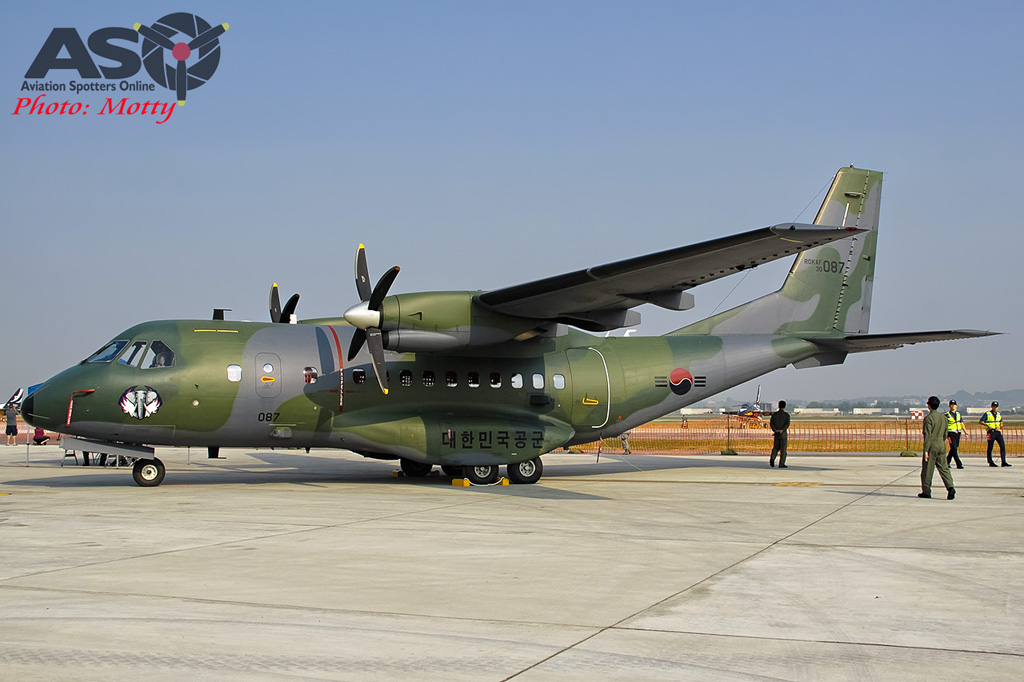
An OH-58D, UH-60L and AH-64D from Korean-based US Army units;
A USAF HH-60G from the 18th WG at Kadena, C-130H from Yokota and a USMC UC-12W from Iwakuni.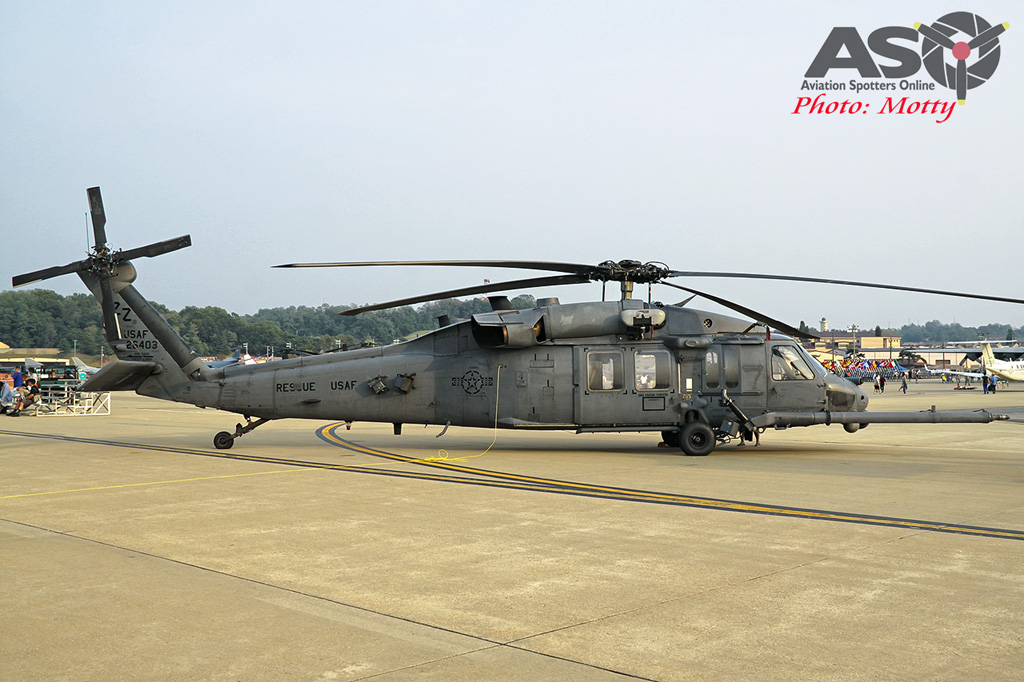
Naturally, there were also examples of an A-10C & F-16C from the 51st FW at Osan and a U-2S from the 5th RS, 9th RW which have a permanent detachment there, along with two F-16s from the 157th Expeditionary FS from the South Carolina ANG’s 169th FW which is currently deployed to Osan as part of a Theater Security Package in the region.
Just days before the show, the small, tight-knit U-2 community had lost one of their own when Lt Col Ira Eadie sustained fatal injuries in an accident involving one of the rare, two-seat trainer versions of this iconic, high flying reconnaissance aircraft near the unit’s home base at Beal in California. The machine on display during the weekend had large artwork applied to both sides of the nose, in chalk, in tribute to the Lt Col.

Nose art applied to the right side if the U-2S on display to commemorate the tragic loss of Lt Col Ira Eadie in the U.S. just the week before.
One of the F-16s on display from the South Carolina ANG (known as the Swamp Foxes) also sported artwork on its tail to mark 50 years of the Wild Weasel radar suppression mission (in 2015) in which this unit specialises.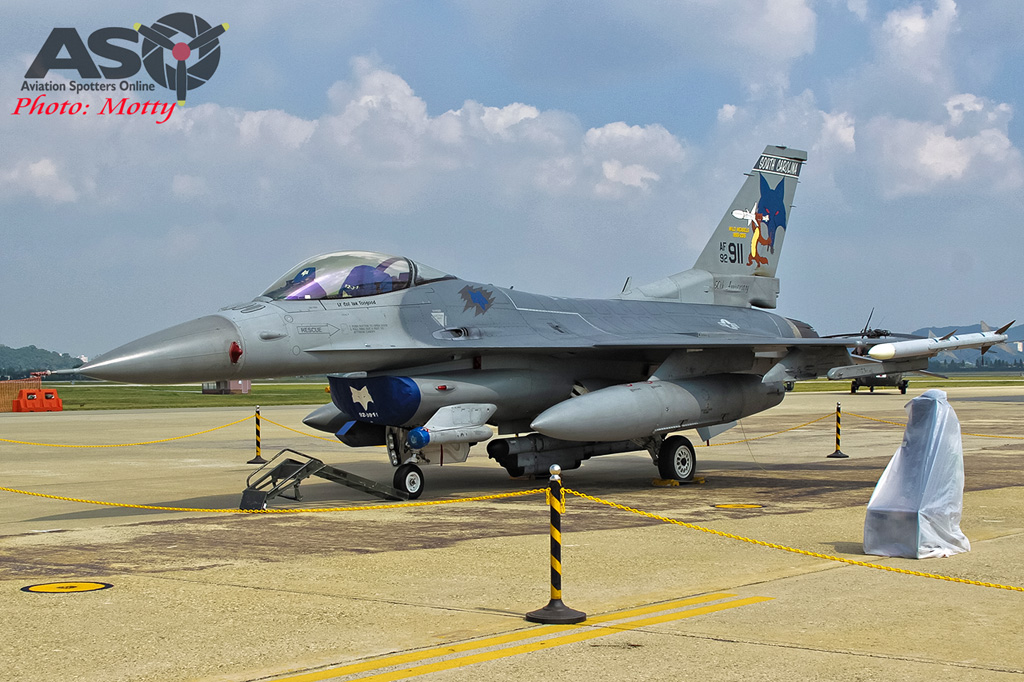
The activities began with the National anthems of Korea and the United States, followed by a parachute jump from a Chinook by ROKAF Special Forces trailing coloured smoke, streamers and the flags of both countries.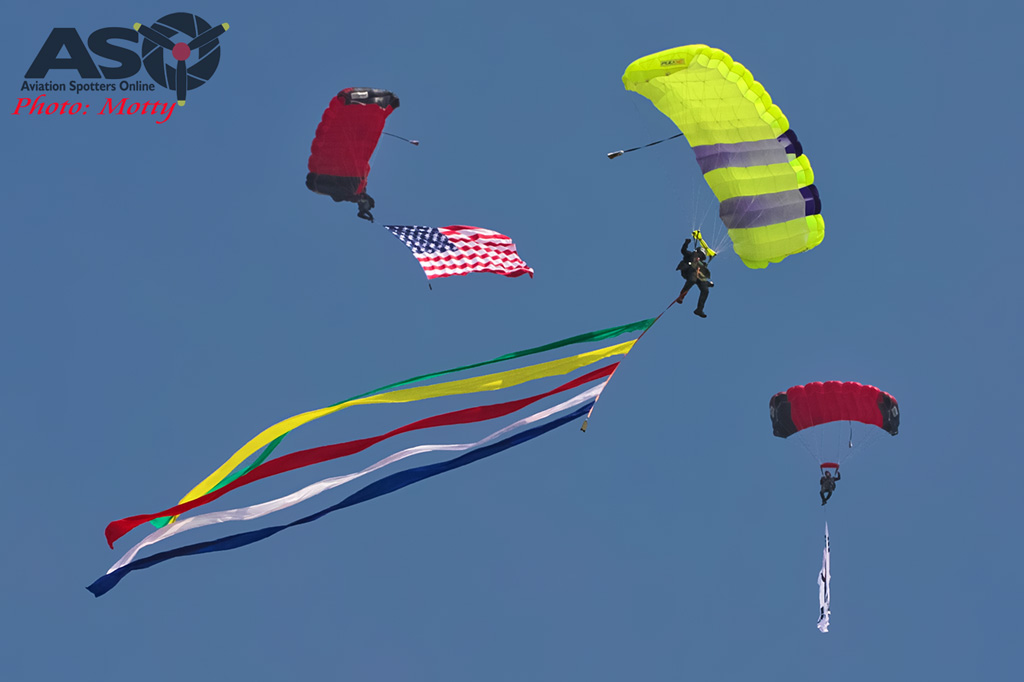
The first flying display was from a mighty C-17 Globemaster III from Hickam in Hawaii. It’s always amazing to see just what this massive airlifter is capable of in skilled hands.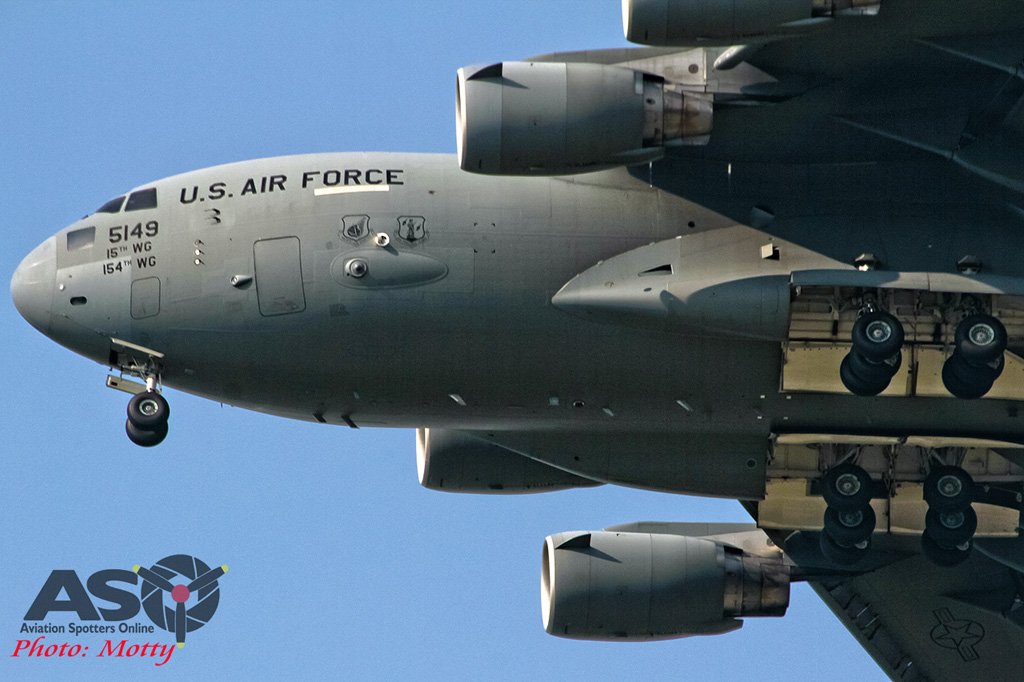
From one end of the size spectrum to the other, after the C-17 came a Korean Aircraft Industries (KAI) KT-1 turboprop trainer followed by an example of the KAI TA-50 Golden Eagle; a very impressive, locally produced advanced trainer.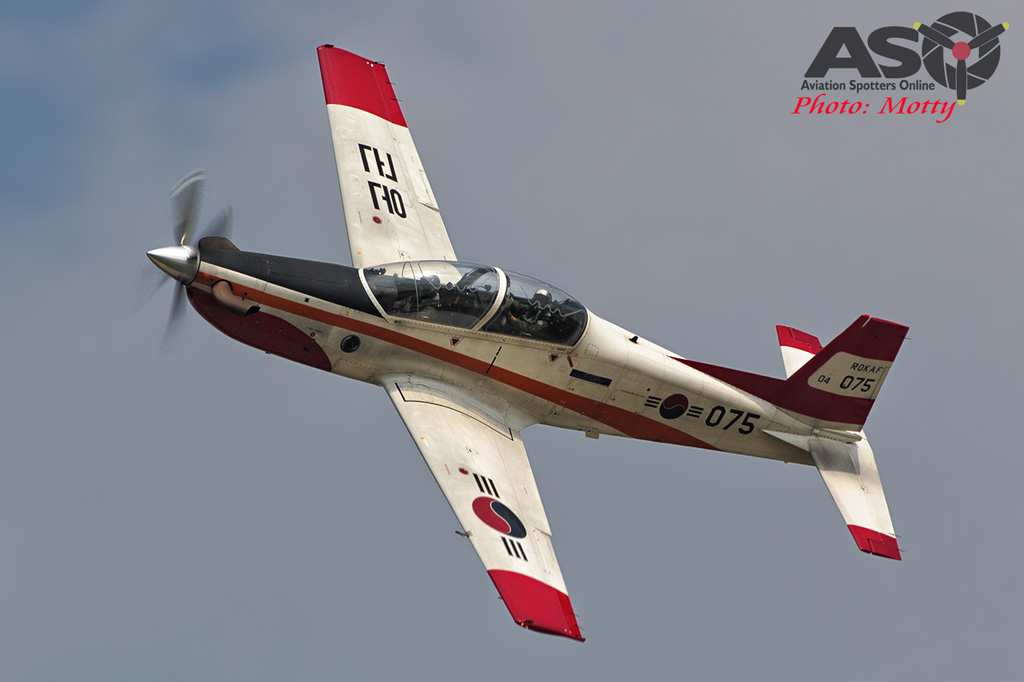
Next was an F-16 from the USAF’s Pacific Air Forces display team from the 35th FW at Misawa in Japan, the same team which only recently performed at the Defence Force T150 airshow at Townsville, here in Australia. They sure do cover a huge area.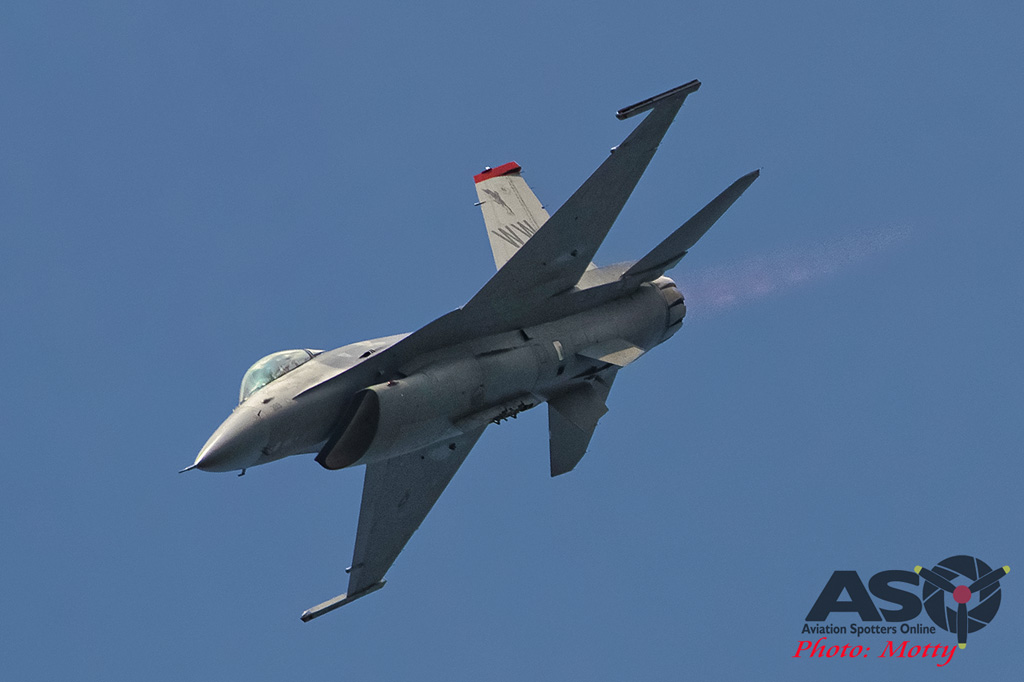
After lunch came what may arguably be considered the highlight of any show at Osan, the Combat Search And Rescue (CSAR) demonstration. The CSAR mission has been recognized as one of great importance in time of conflict as it has been demonstrated, since the second world war, that aircrews will have a higher morale and greater effectiveness when they know that every effort possible will be made to secure their rescue if they are brought down behind enemy lines. The current mission, using specialized and highly trained forces in coordinated operations, was first developed during the Korean War and further refined during Vietnam, particularly the use of maneuverable and heavily armed aircraft for helicopter escort and fire suppression. In Vietnam, this was most ably performed by the A-1 Skyraider. The call-sign used by the Skyraider pilots on these missions, Sandy, became synonymous with the mission and the aircraft themselves were often referred to as Sandys.
Today, the Sandy role is most capably performed by the Republic A-10 Thunderbolt II, a slow, maneuverable and very heavily armed and armored machine, much like the iconic Skyraider before it, and Osan is home to the only A-10 unit in the Asia-Pacific region, the 25th FS, the “Assam Draggins”, making this show a great opportunity to see these impressive machines in “action”. 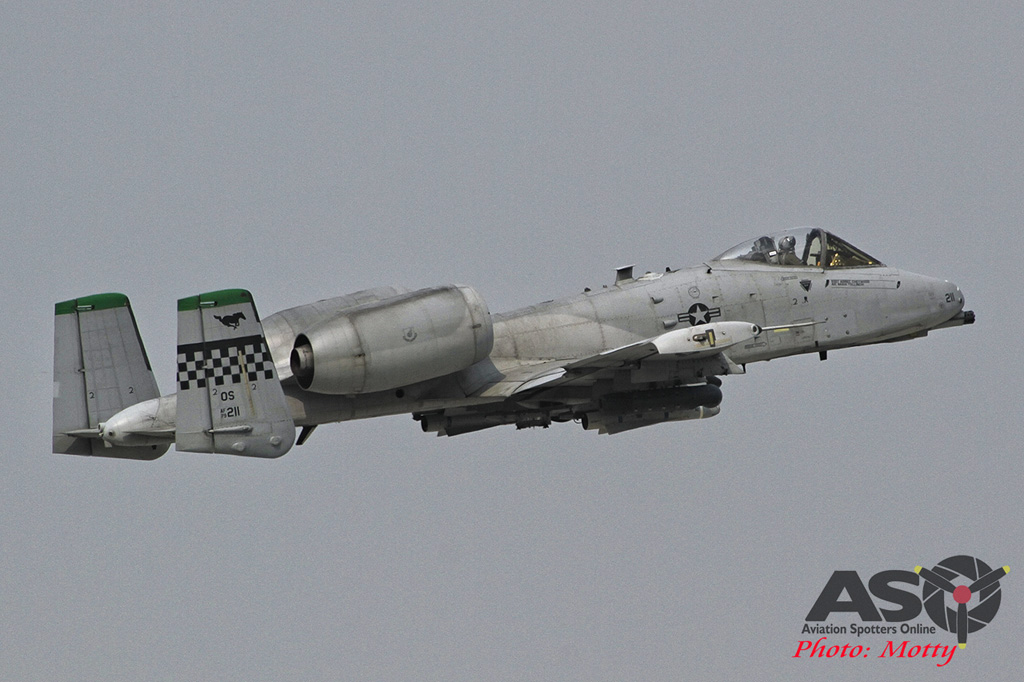
After the aircraft take off and depart the area, the display begins with the narrator providing a brief history and background of the CSAR mission as well as the playing of the various radio calls between the aircraft, helicopters and “downed pilot” in the lead –up to the actual rescue. The first aircraft on scene are there to clear any major enemy forces or air defence risks. In previous years, this has been performed by Osan-based F-16s from the 36th FS but this year the task was performed by other A-10s, simulating strafing and bombing runs on the target area in front of the crowd. Once the area has been “cleared”, the strike aircraft maintain a constant cover overhead while the rescue helicopters and their escorting A-10s are called in.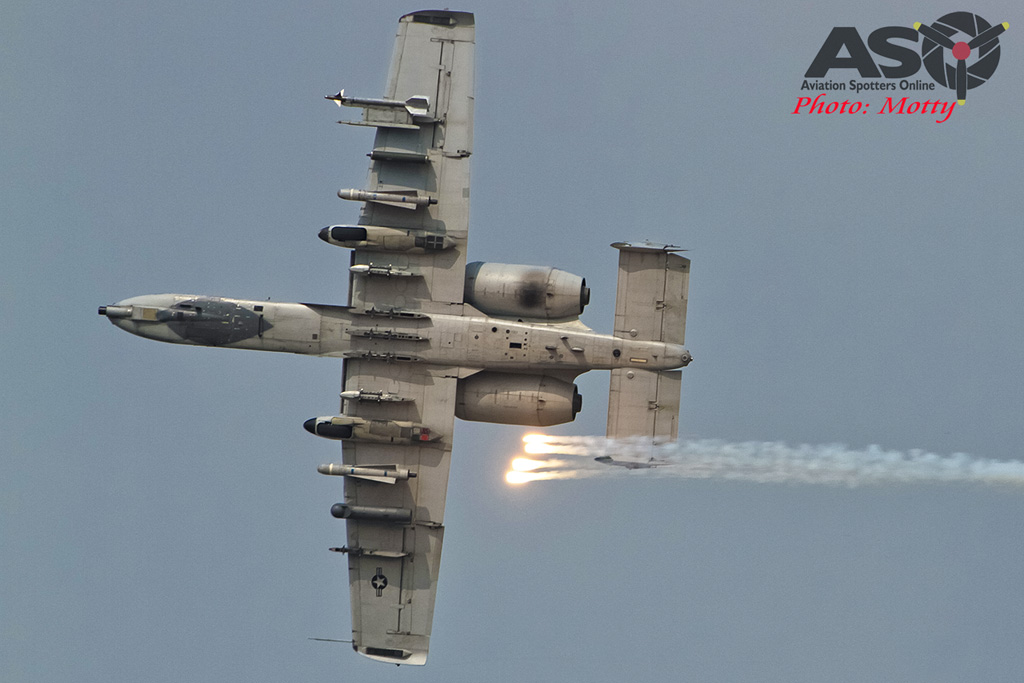
In Korea, the rescue mission would most usually be performed by the ROKAF’s own dedicated CSAR units equipped with specially equipped Blackhawks (one of which was on static display) but for this demonstration, the role was performed by a pair of US Army Blackhawks from B Company, 2-2 Assault Batallion based at Seoul Air Base. It’s an impressive sight to watch the two rescue helicopters approaching in the distance with the two escorting A-10s circling above them while listening to the radio calls between them all, until they reach the target area when a very rapid and hectic process begins where the escorting A-10s will suppress any enemy forces nearby whilst circling above the helicopters which simultaneously make a rapid entrance to the landing area. One maintains a covering position to provide suppressive fire if needed whilst the other rapidly slows and lands to collect the downed aircrew. Once the pilot is safely aboard, both helicopters push their noses down and rapidly accelerate out of the area at speed, all the while the A-10s circle overhead and make simulated strikes on “enemy forces” before escorting the helicopters out of the area.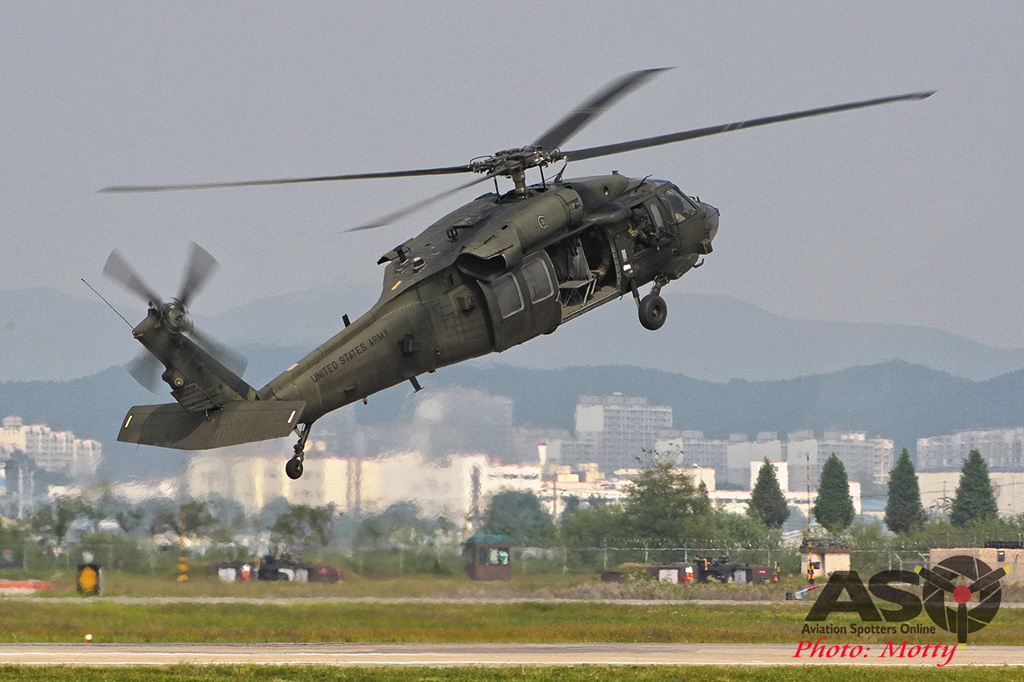
While it takes a while for the display to “get going”, with the background and radio calls starting long before any aircraft are visible, the whole effect of the anticipation, the initial strikes by the advance aircraft then the final mayhem of a very rapid and hectic operation to retrieve the downed aircrew in the shortest possible time under assumed enemy fire; A-10s coming and going, punching out flares to evade enemy ground to air defences, helicopters rapidly entering and exiting the area, then the equally rapid departure of all the participants; it really is a very dynamic and impressive display and must surely portray the impact of an actual mission quite accurately within the confines of airshow and safety considerations (and no one actually shooting anything at anyone, thankfully 😉 ).
Rounding out the day’s flying displays was a performance by Korea’s national aerobatic team, the ROKAF’s Black Eagles. This team is the pride of Korea in their T-50B versions of the Golden Eagle advanced trainer, built specifically for the team by KAI and painted in their distinctive black, yellow and white colours. Like other, more widely known fast-jet display teams such as the Thunderbirds and Blue Angels, the entire show is a well-staged performance, from the crews marching to their machines, the co-ordinated start-up and taxy sequences, right up until engine shut-down, the highly enthusiastic crowds are treated to a very polished performance of flying skill and you will often hear the entire crowd ooh-ing and ah-ing and applauding the team’s performances as one. For a more in-depth look at this great team, its history and their T-50 aircraft, please have a look at my previous article here.
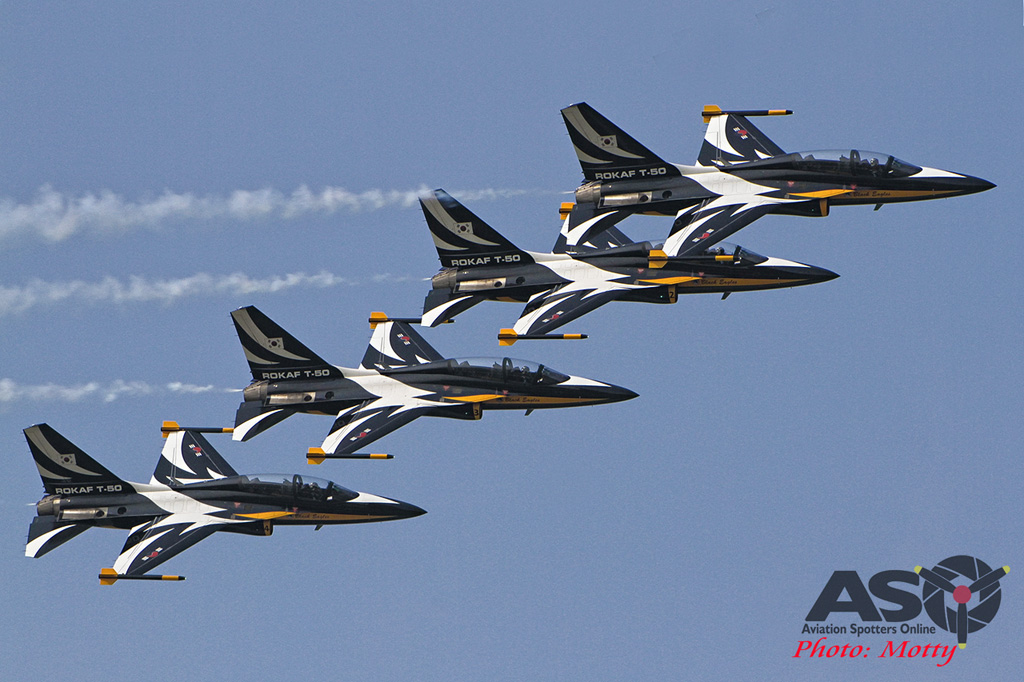
The rest of Saturday’s show was filled with musical performances by rock bands comprised of USAF personnel who play in their spare time, and the chance for the families and crowds to sample the many food stalls and vendors as well as get a look at (and sometimes sit in) the various aircraft on static display. For the enthusiasts, the time was spent searching out some of the memorabilia that the different units had available for sale and waiting for the crowds to disperse so as to get some more of those elusive people-free shots. 😉 There was also the opportunity catch a few more images of the mighty B-1B as the sun set behind it and, at the very end, we were treated to the return of a U-2 from an operational sortie.
Although following a similar schedule, Sunday’s show was plagued by terrible visibility in the morning, a frequent issue in Korea, to the extent that some displays had to be cancelled or, at least, postponed, and even the huge C-17 disappeared into the murk. It’s a strange phenomena where it’s possible to watch an F-16 zoom-climb to 10,000 feet or so but when it’s down at display height, you can’t see it crossing the airfield boundary. An added bonus on Sunday was a display by the U-2 which had the commemorative nose-art applied, consisting of a take-off, a couple of passes and landing, before it was placed on static display like the day before. Thankfully the visibility cleared up a bit for the CSAR demo and Black Eagles display in the afternoon.
Whilst not huge in the international sense of airshows, and its main focus is one of local community relations, Osan must surely rate as one of the most interesting shows around for enthusiasts with the opportunity to see such interesting and exotic types displayed in one place. Whether it’s the ROKAF types or visiting US assets in the static, the opportunity to see A-10s in the CSAR demo or the always impressive routines from the Black Eagles, there’s something for everyone, and it’s great to see this show return after a four year hiatus. Here’s hoping it will once again become a regular and major feature of the Korean airshow calendar in years to come.

My thanks to the men and women of the 51st FW and all the other units and organisations involved for giving up their time and making this such a great show.
Motty.

